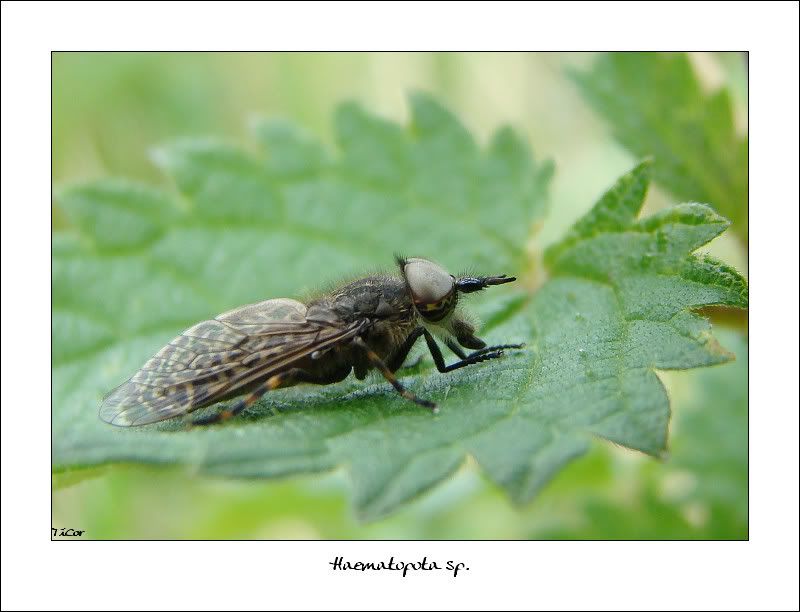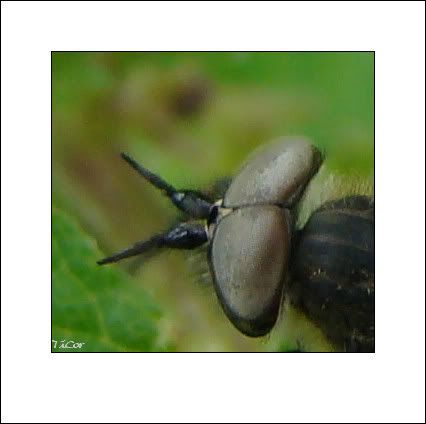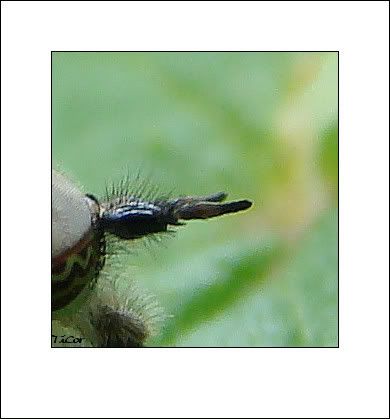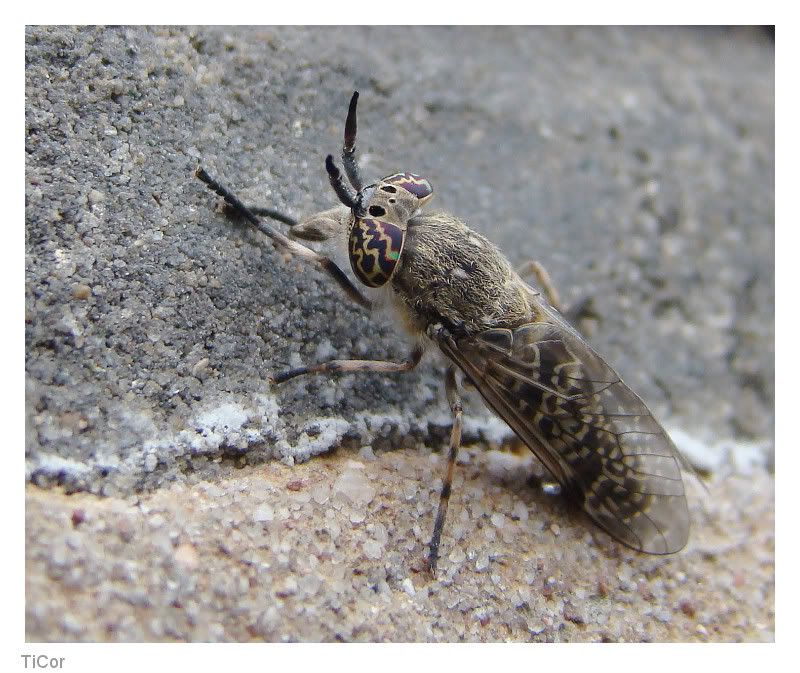Thread subject: Diptera.info :: Tabanidae
Posted by TiCor on 29-07-2007 19:07
#1
I have photographed some Haematopota species.
They were all found in Belgium.
One of these (see first picture) was Identified as H. subcylindrica.

The one I photgraphed today seems to be a H. crassicornis. Could someone please verify that?




Posted by Zeegers on 29-07-2007 20:52
#2
Haematopota males are very difficult to ID and many mistakes have been made. I have tried to incorporate and circumvent these mistakes in my key for the Benelux (Zeegers & van Haaren).
The first one is, in my mind, most likely H. italica, indeed often recorded as subcylindrica. I cannot see enough to be really sure.
The H. crassicornis seems OK (easiest species, but still beware !)
Theo Zeegers
Posted by TiCor on 29-07-2007 21:02
#3
Thank you for helping me out Theo!
Just one question. The Haematopota on the pic below was identified as H. italica. It seems to be a whole different specie as the one I posted in the first pic above.

This is a detail of thje antenna of the one which I thought it would be H. subcylindrica

Edited by TiCor on 29-07-2007 21:04
Posted by TiCor on 29-07-2007 23:35
#4
I'm sorry, but I have another question.
The H. crassicornis I posted is a male and the other two female.
Is this correct?
Posted by Zeegers on 30-07-2007 07:48
#5
The last italica is correct. It's a female.
As in Syrphidae: eyes touching -> males,
broadly separated -> females.
So all crassicornis are male.
As you noted correctly, sexual dimorphism can be quite strong in Tabanidae.
Theo






